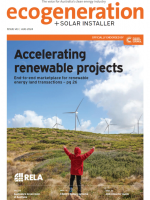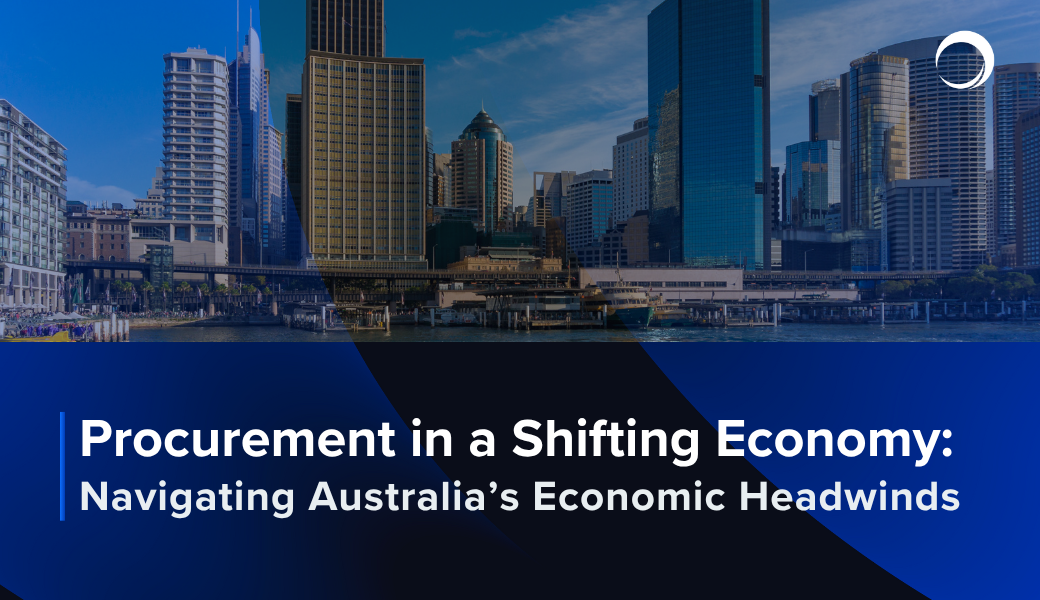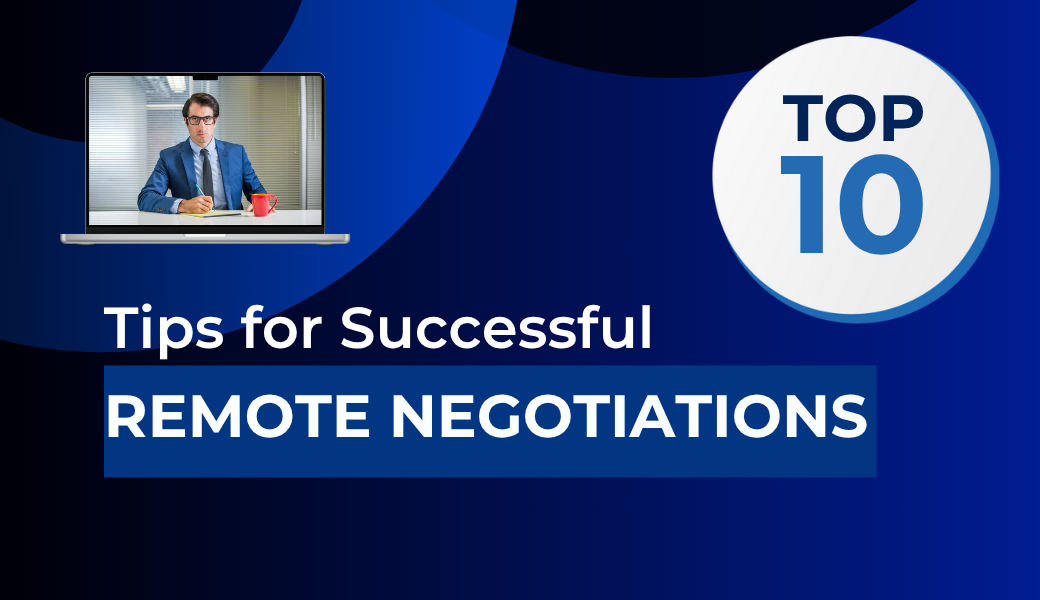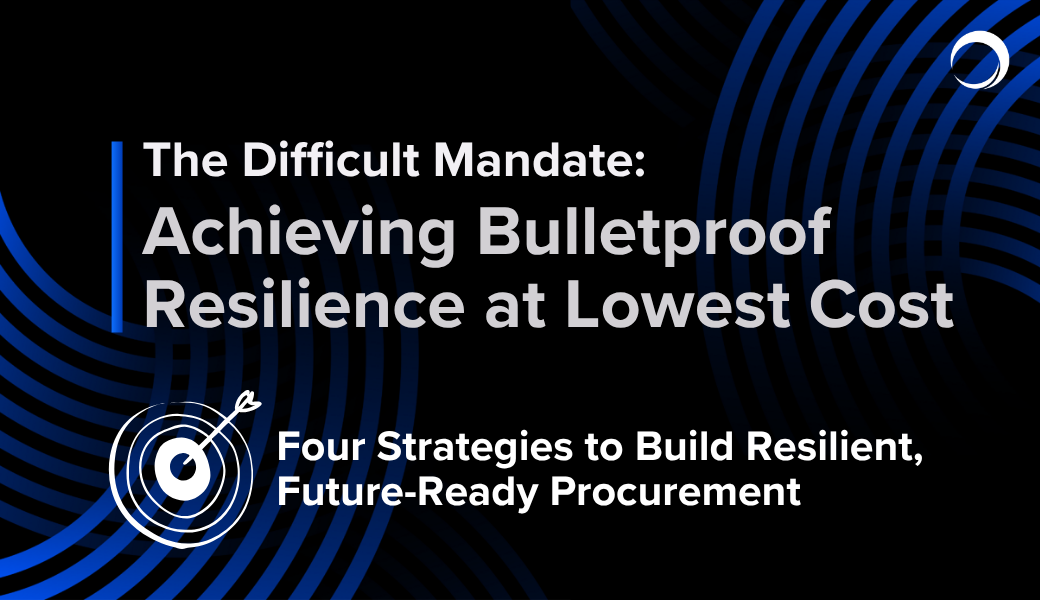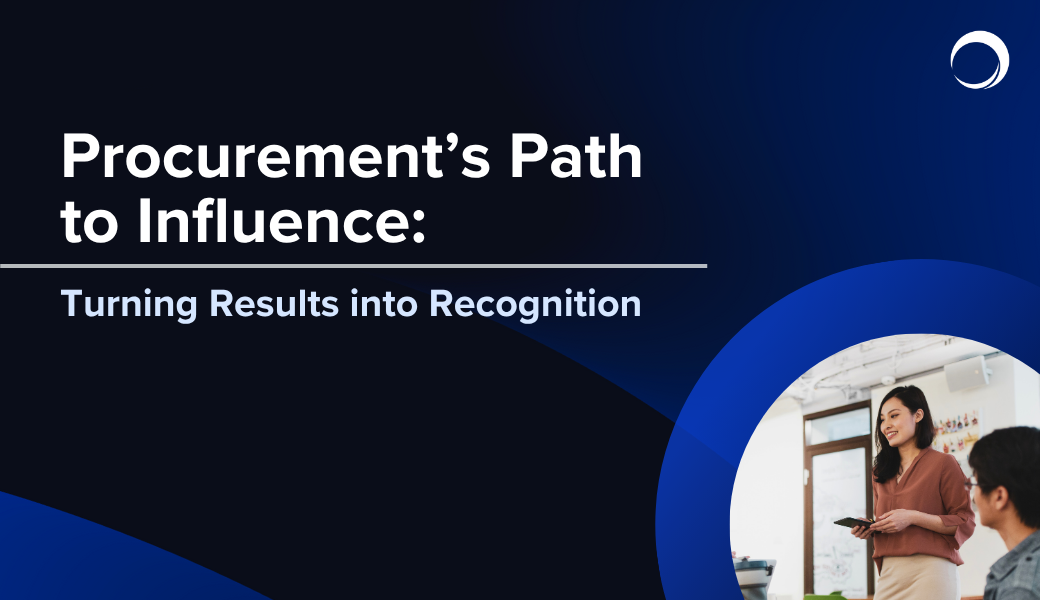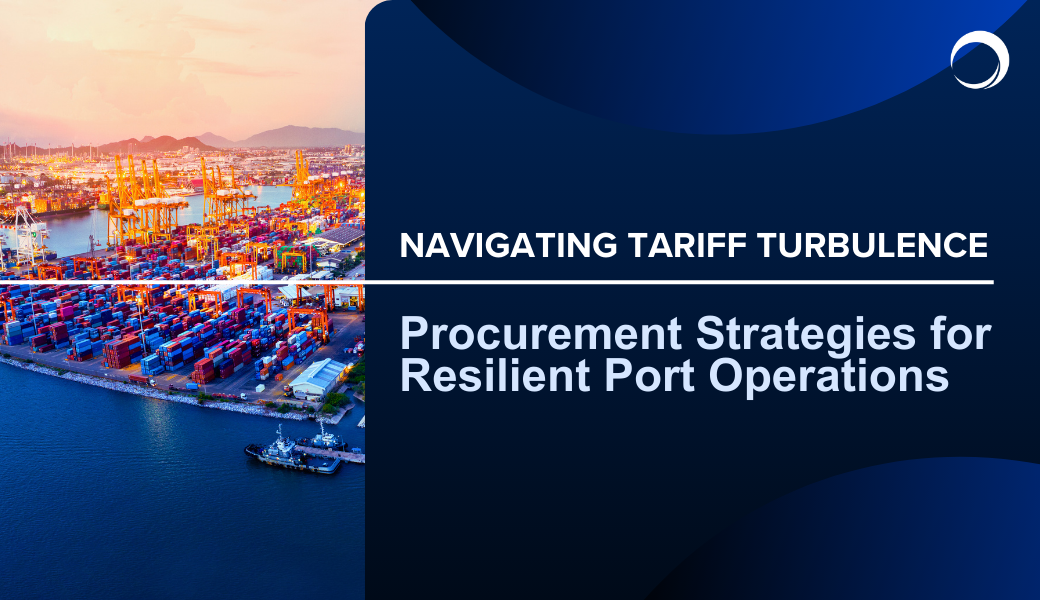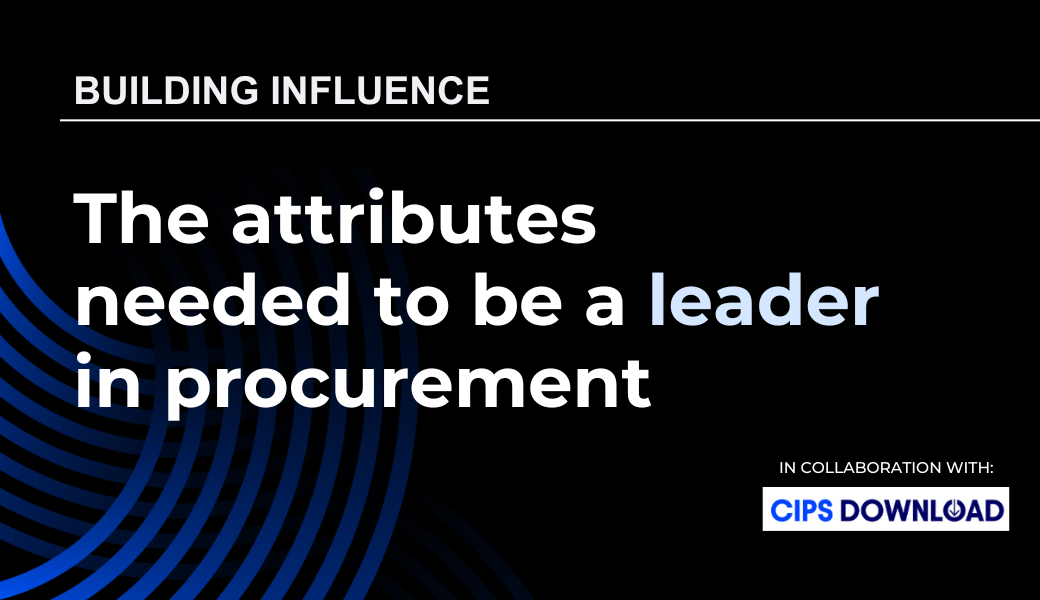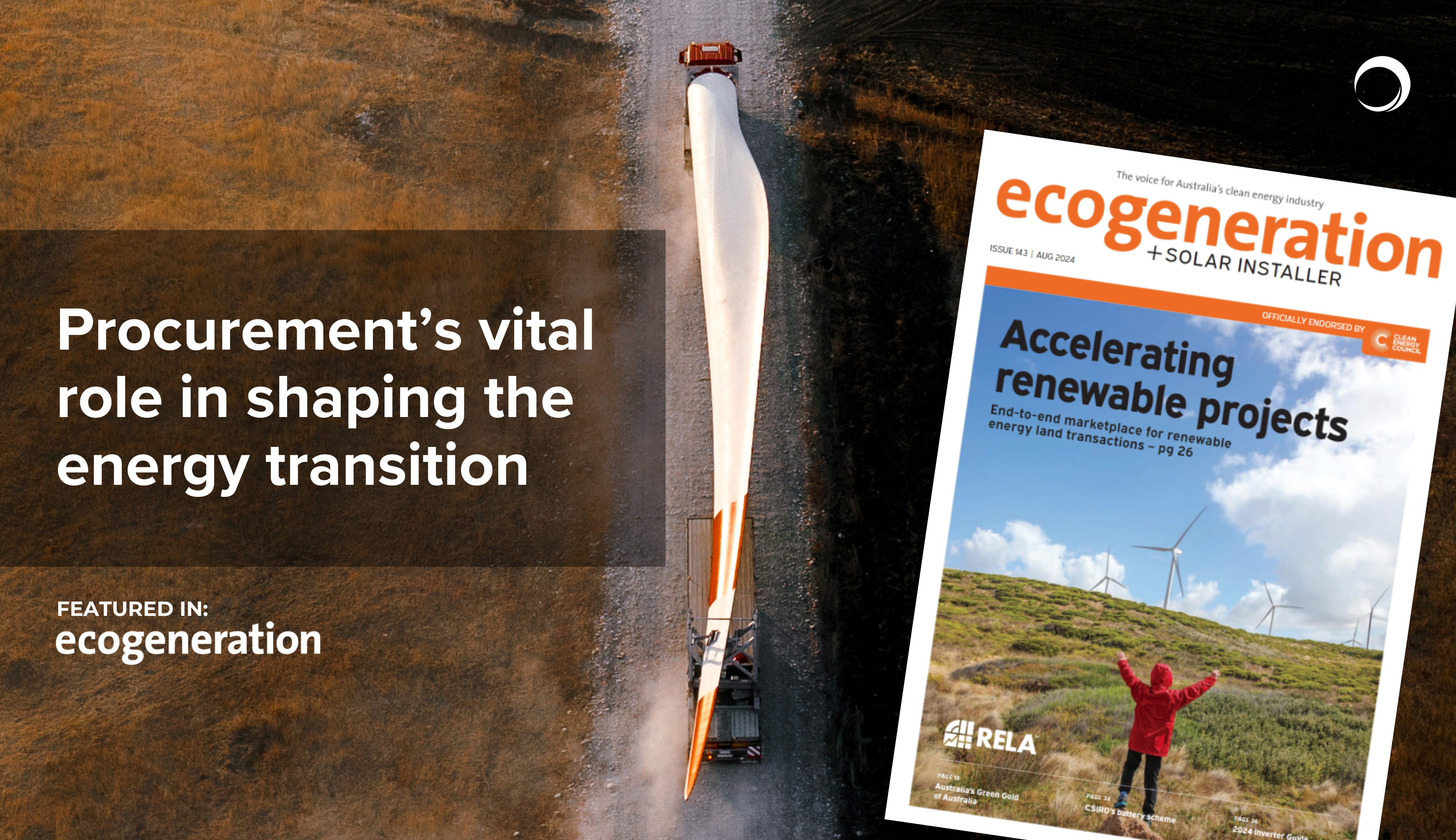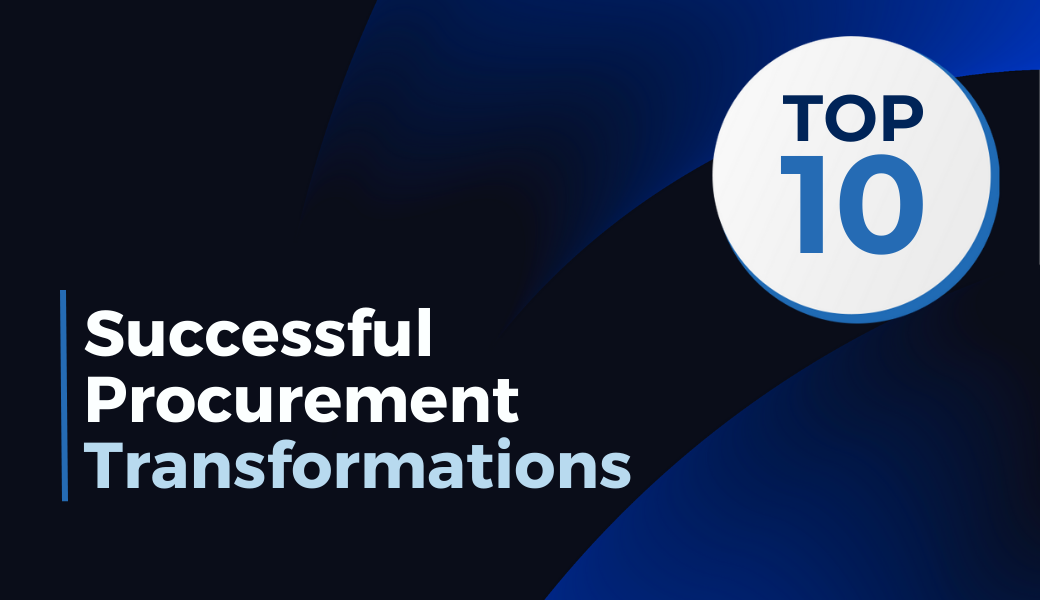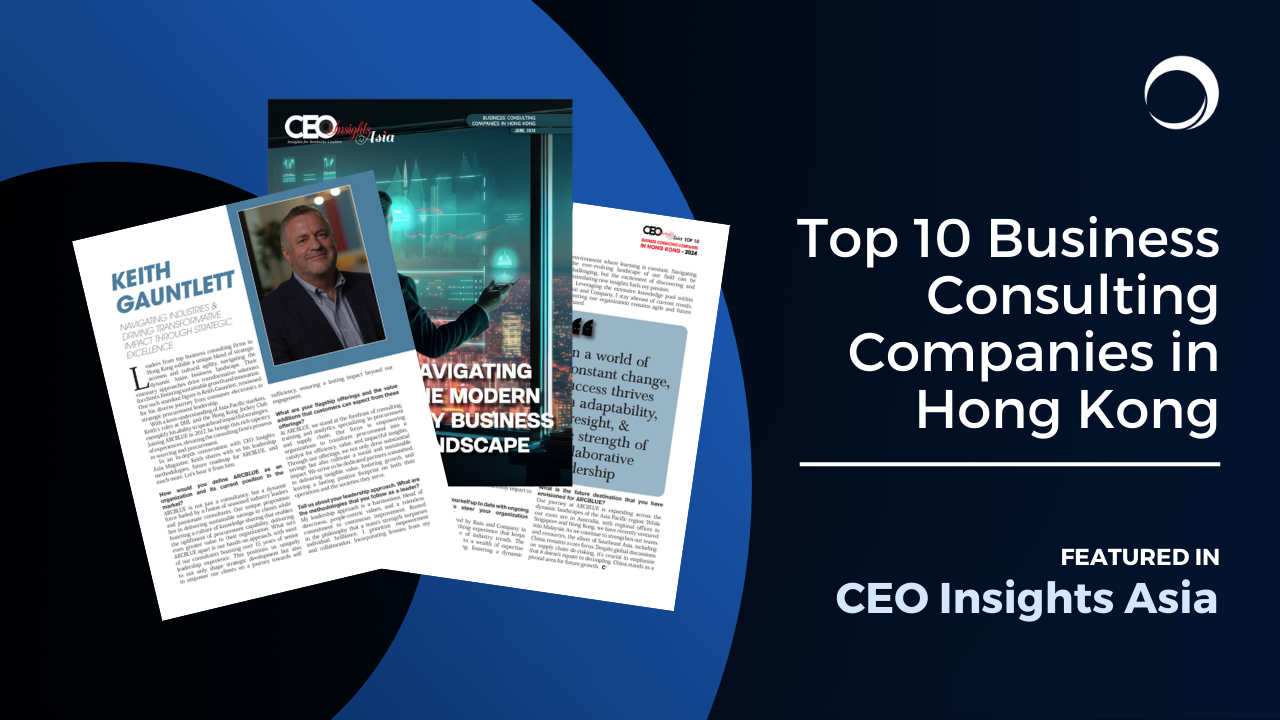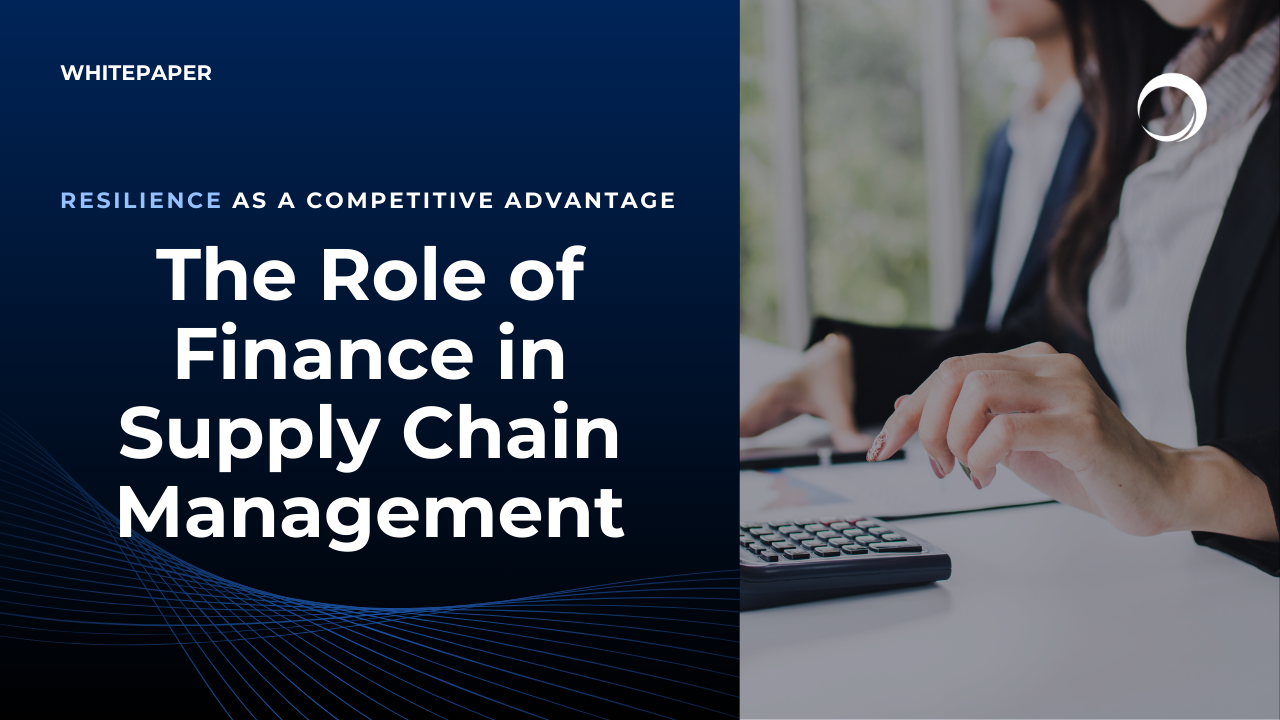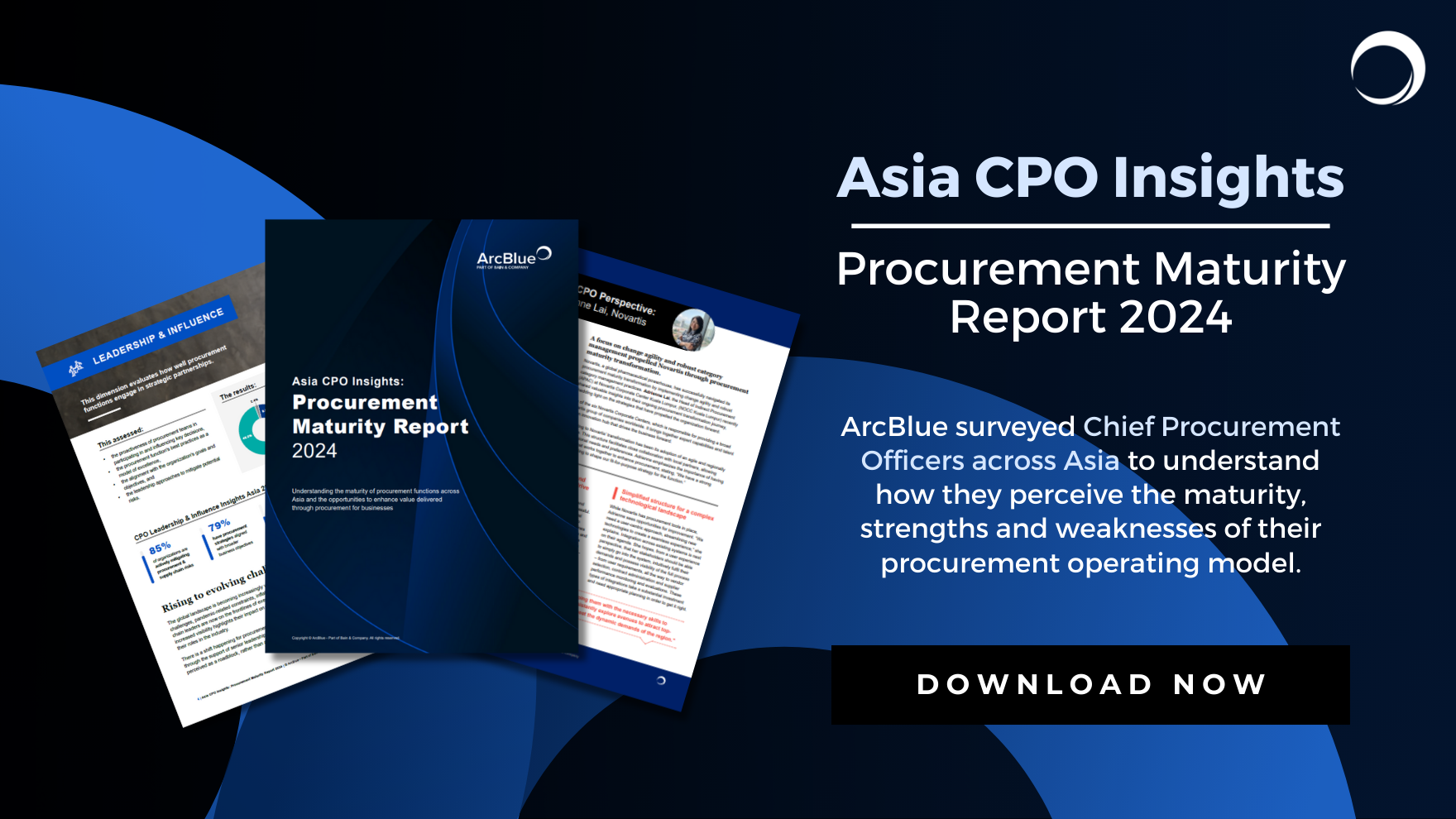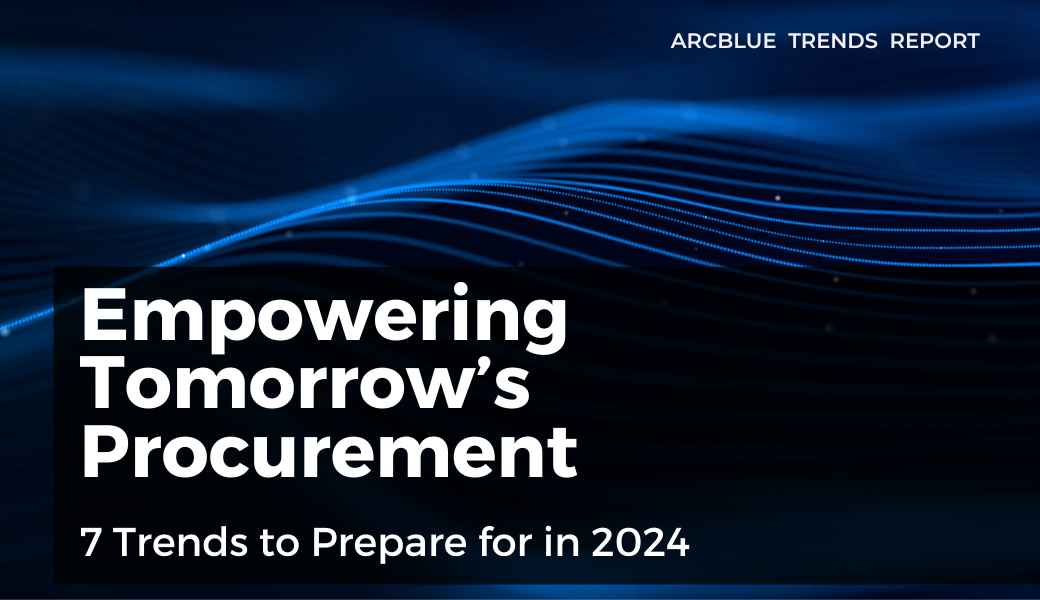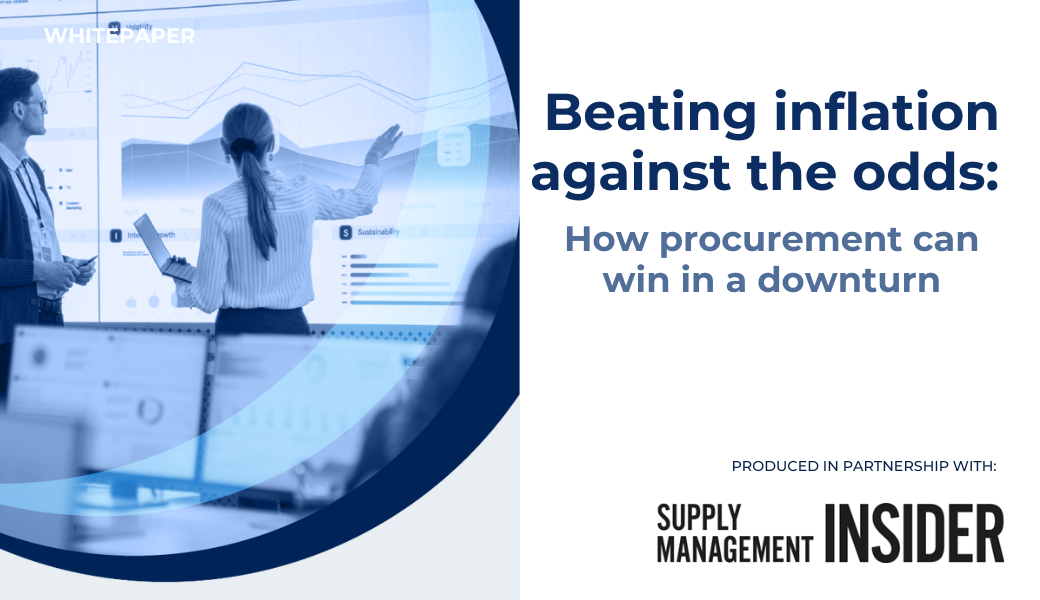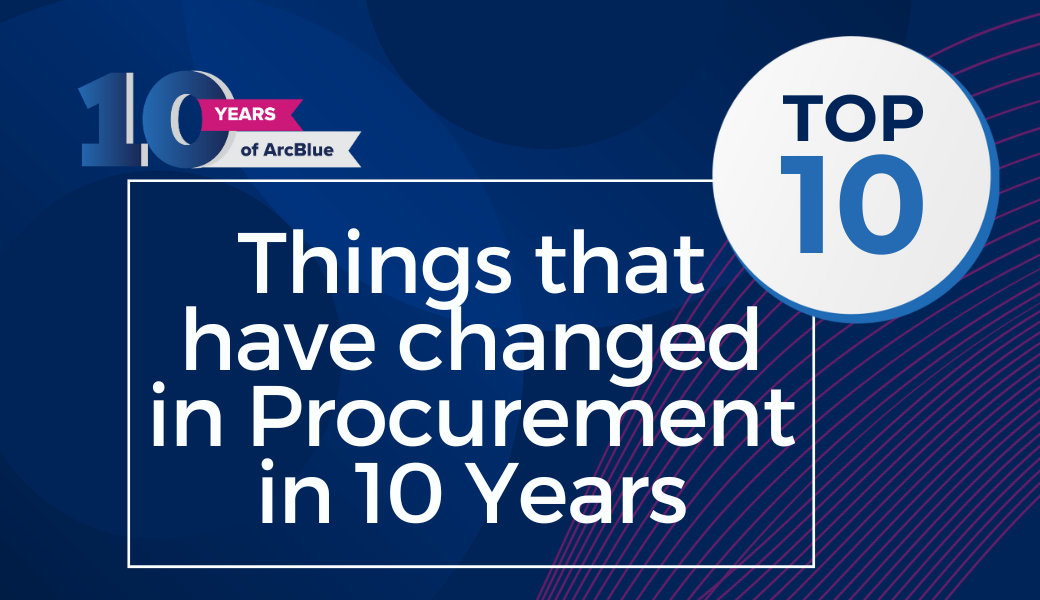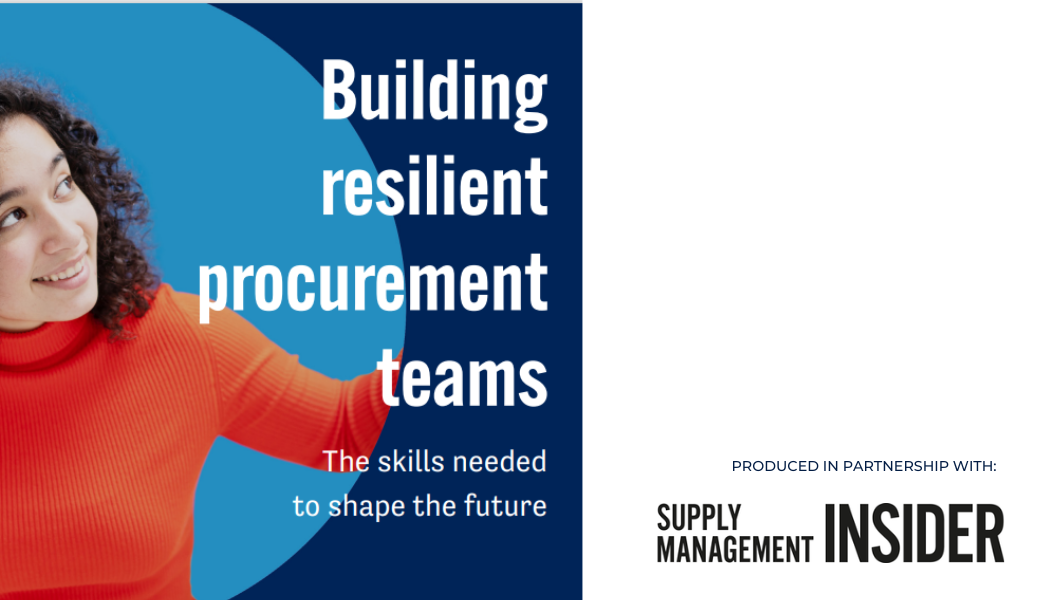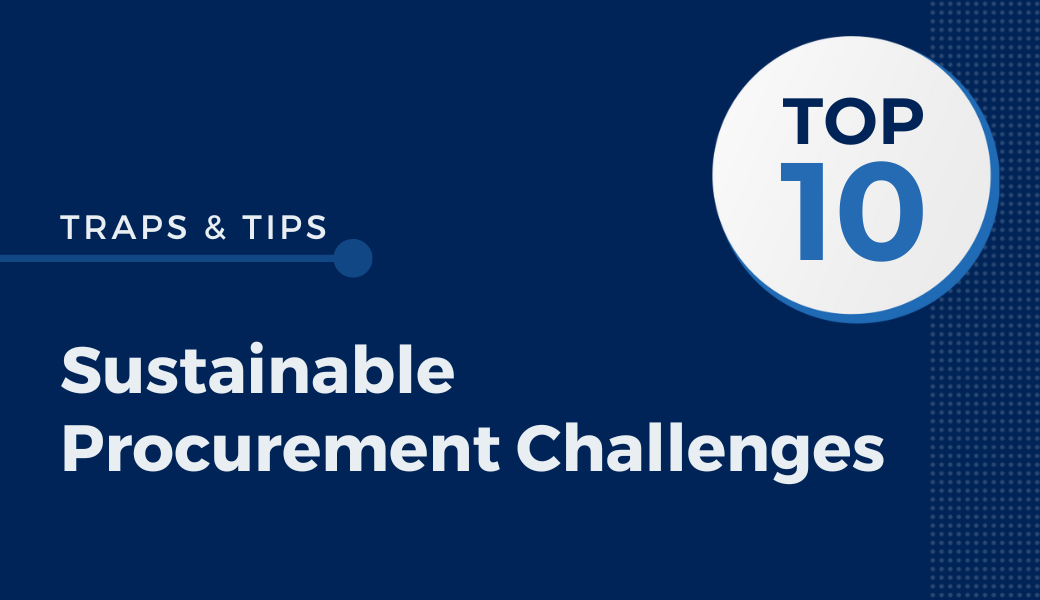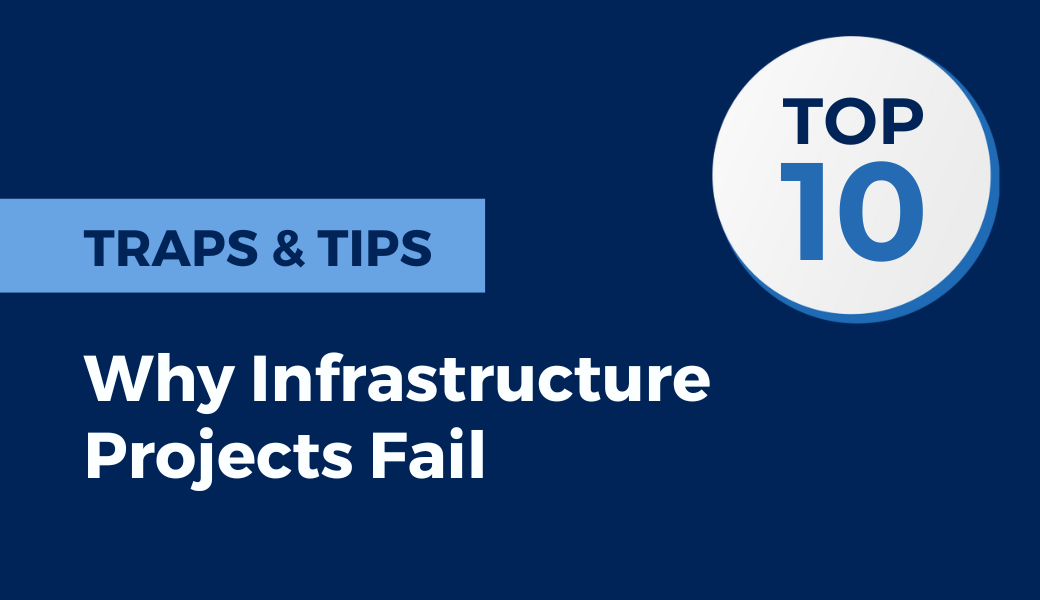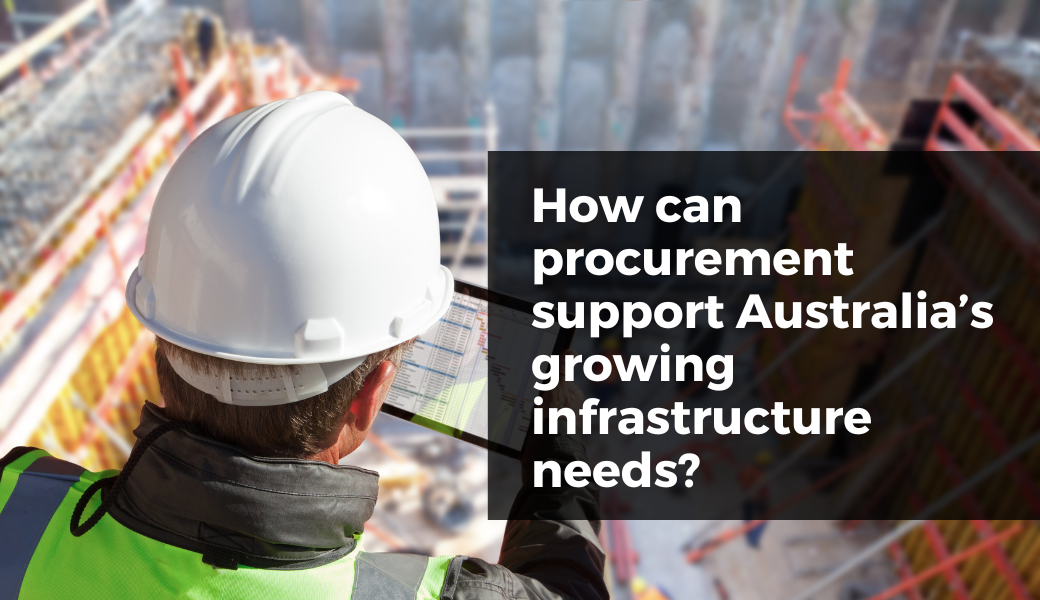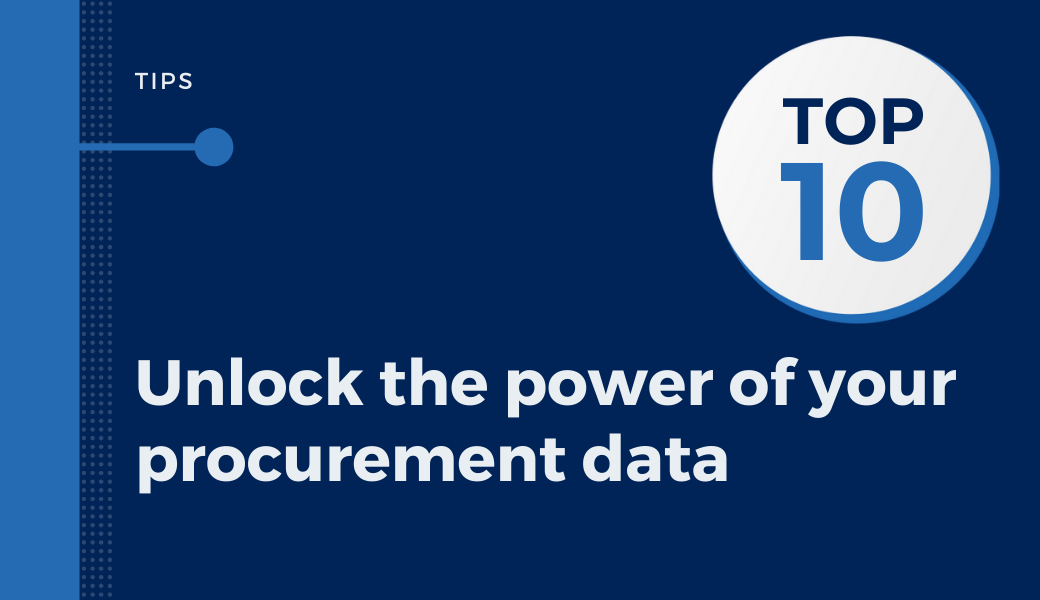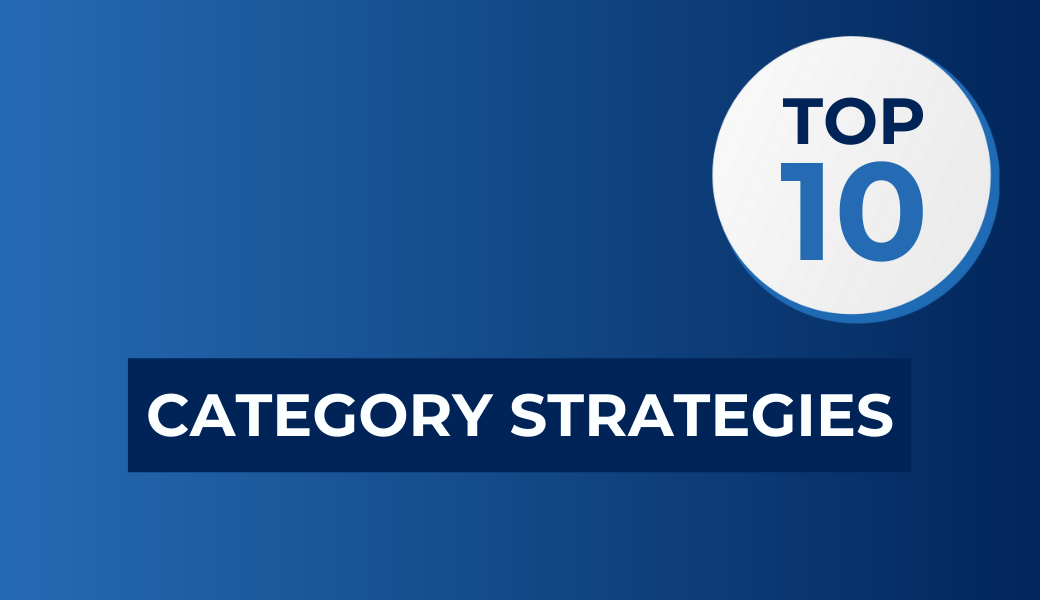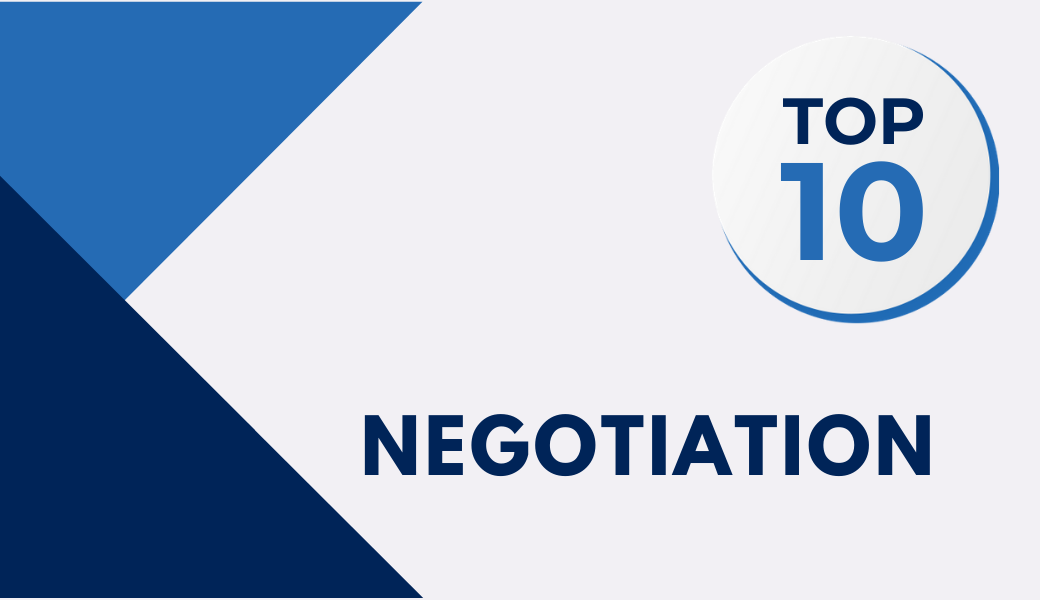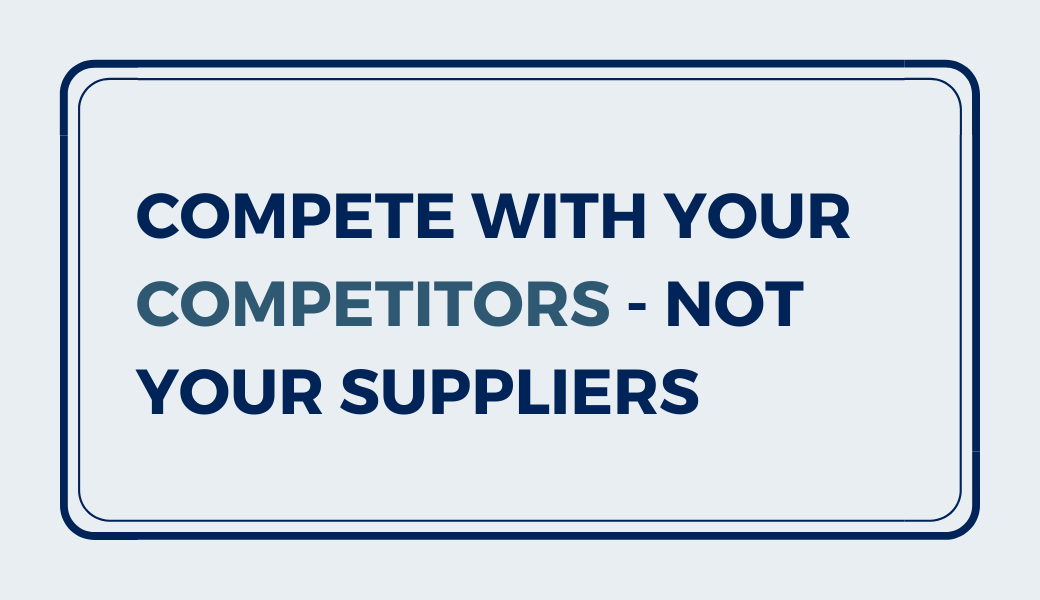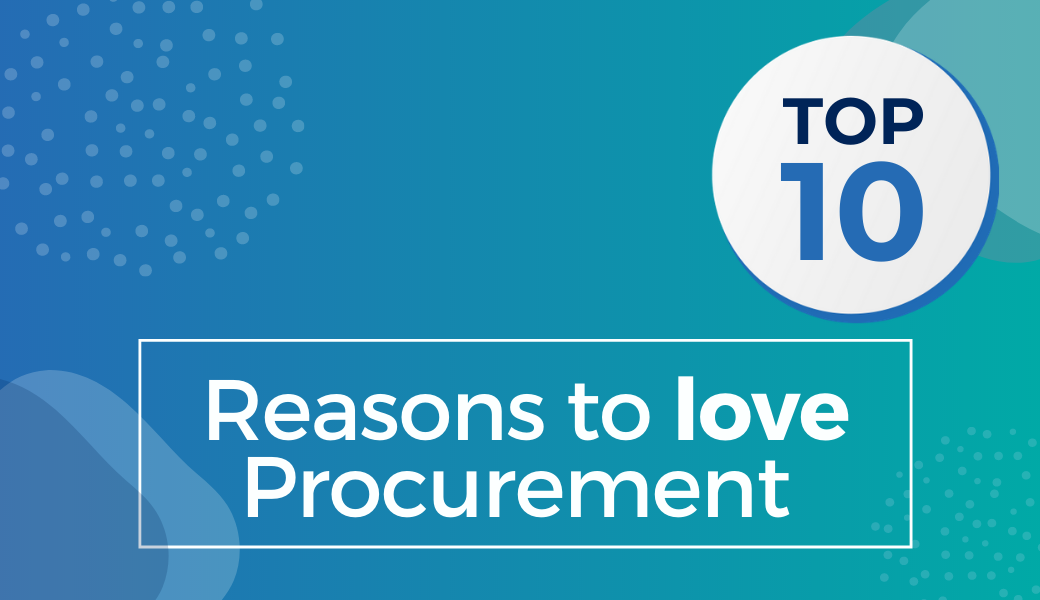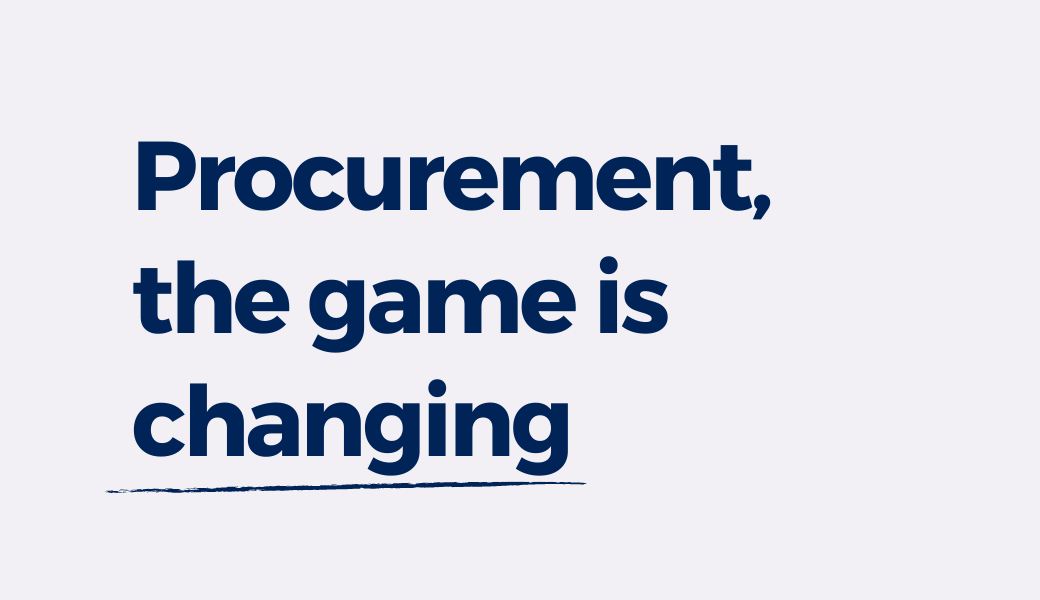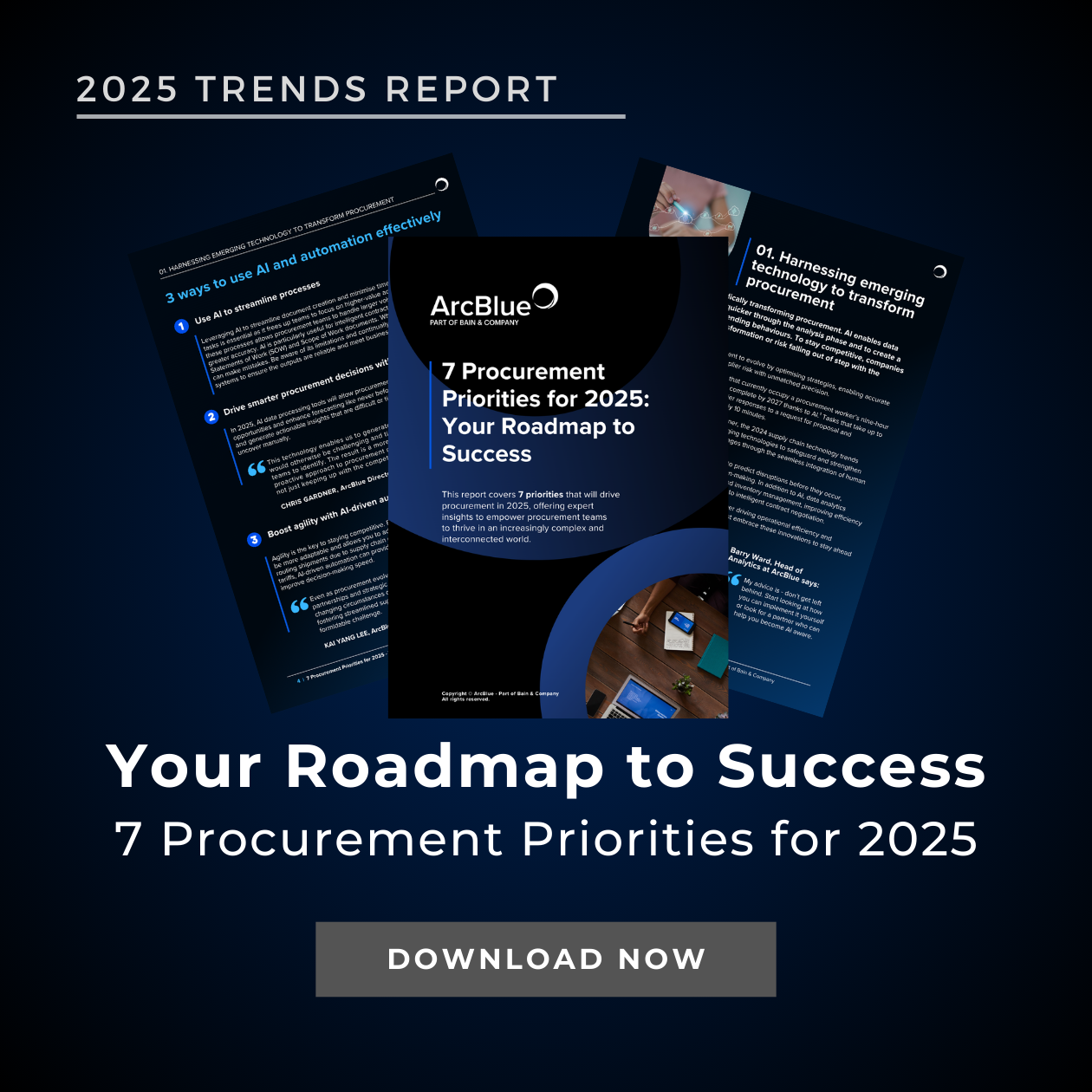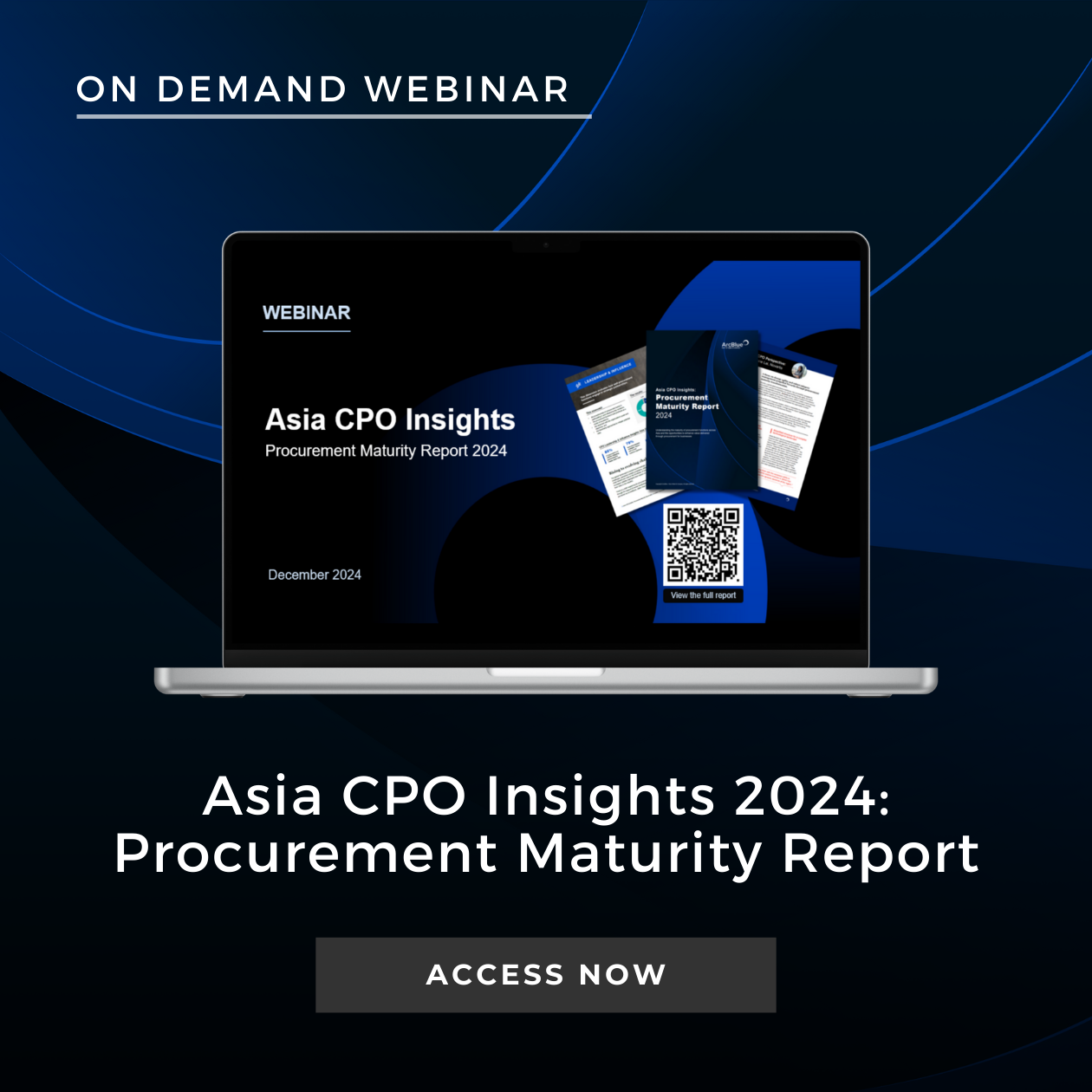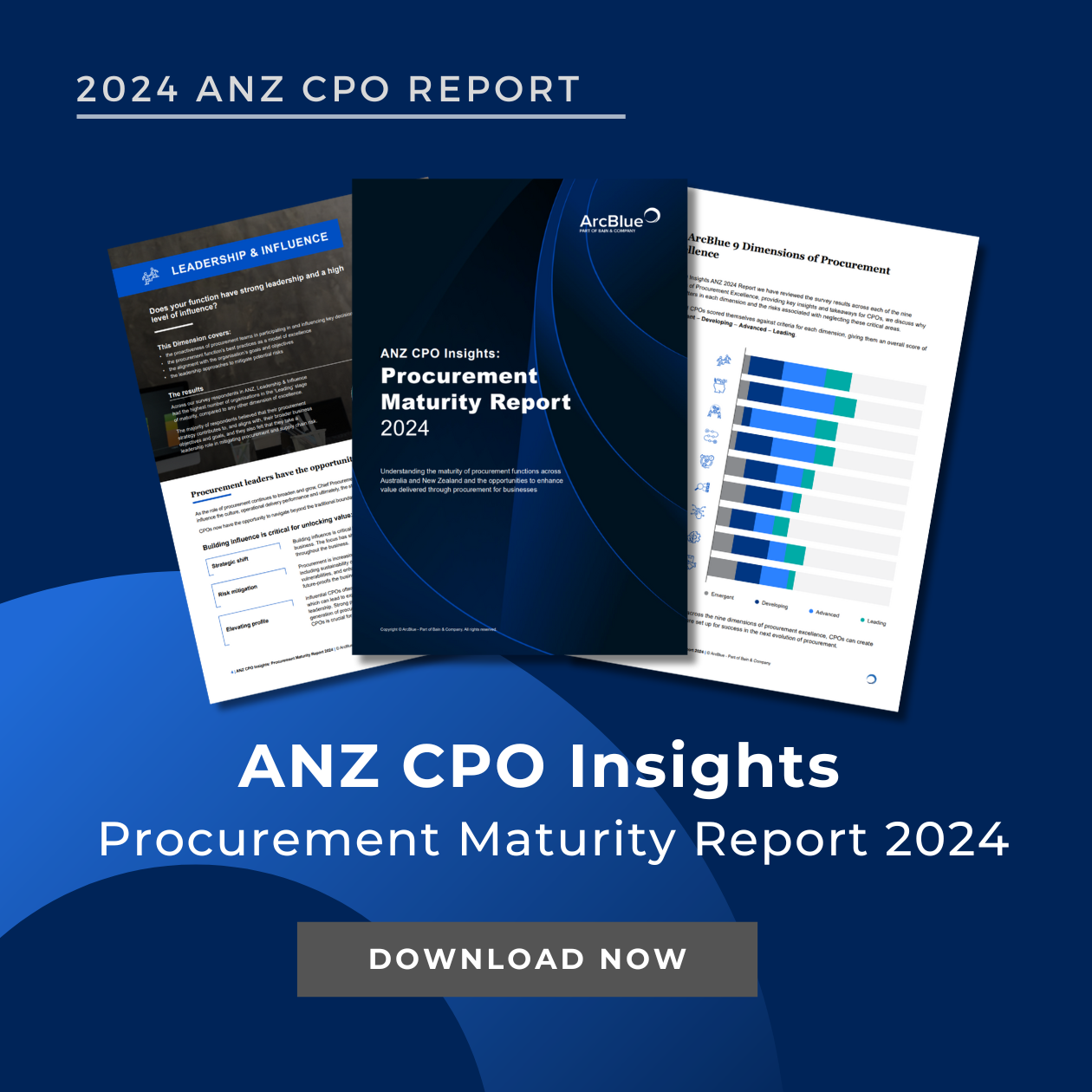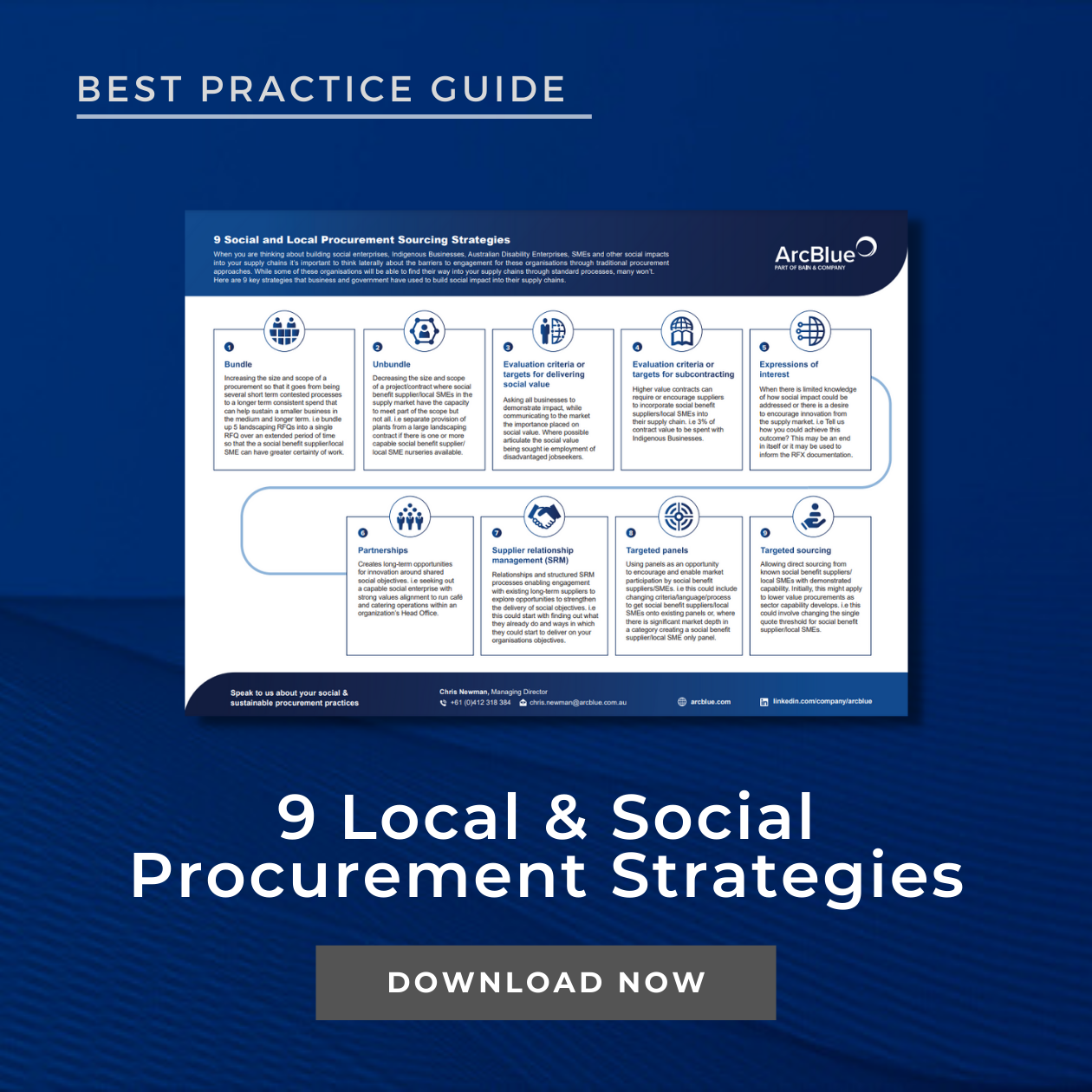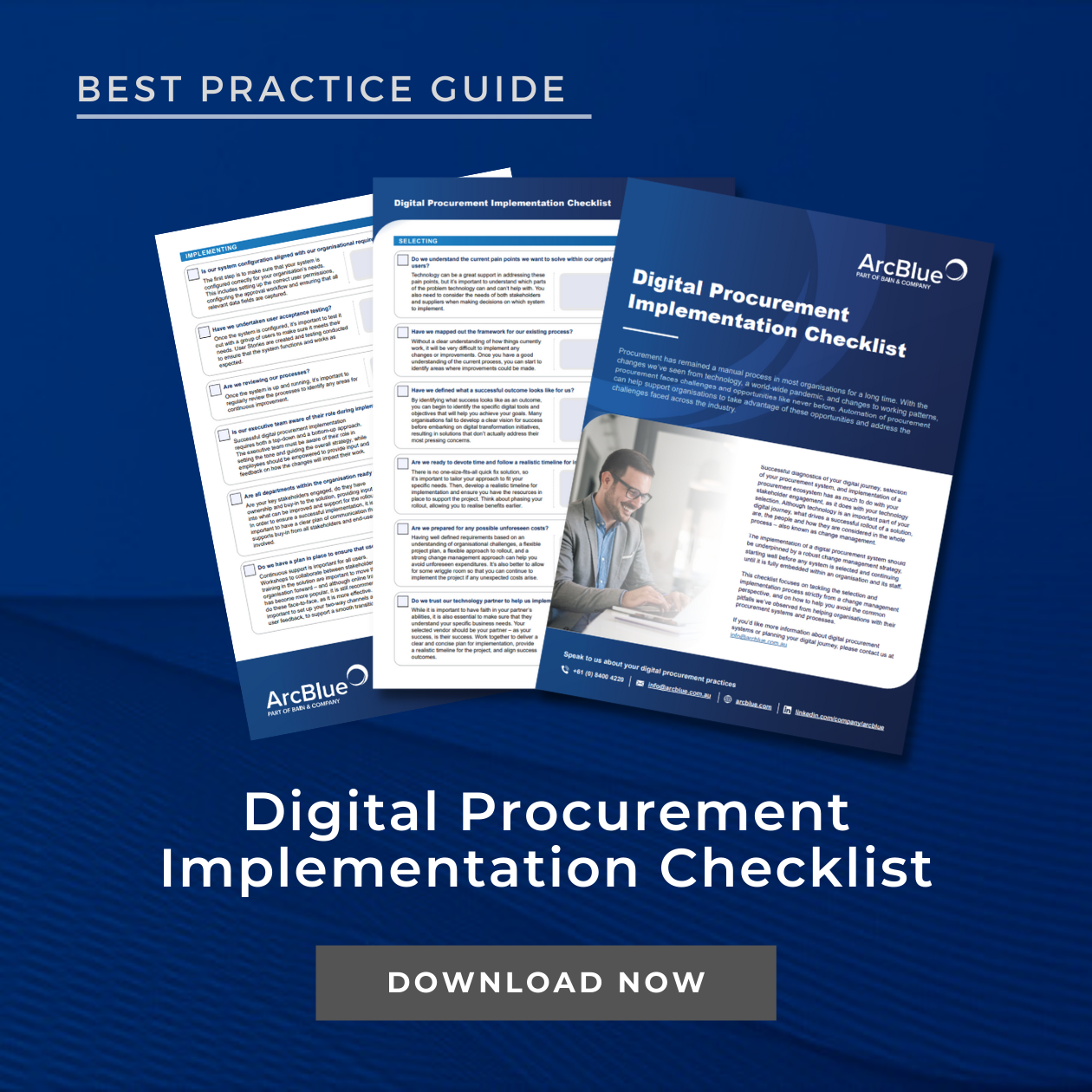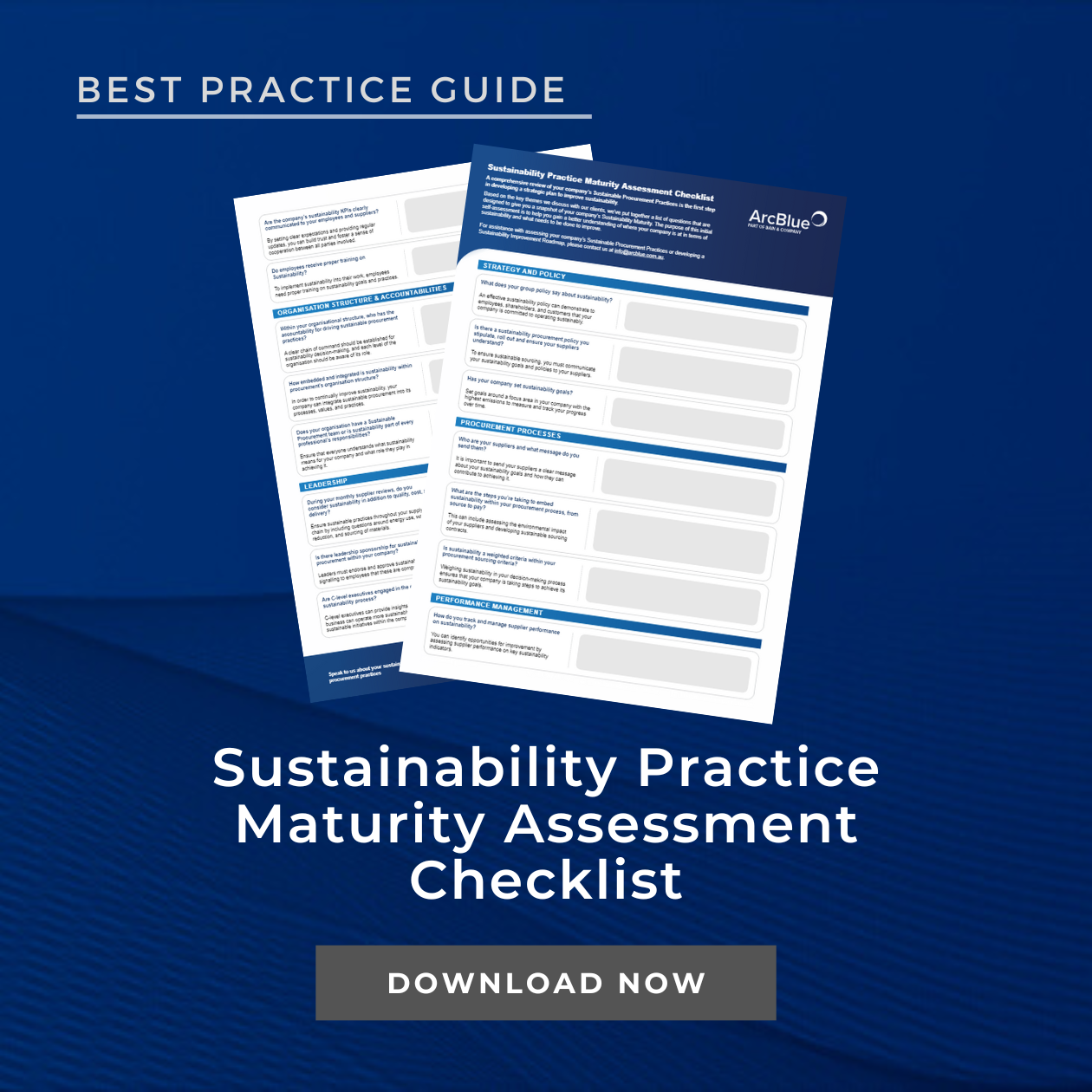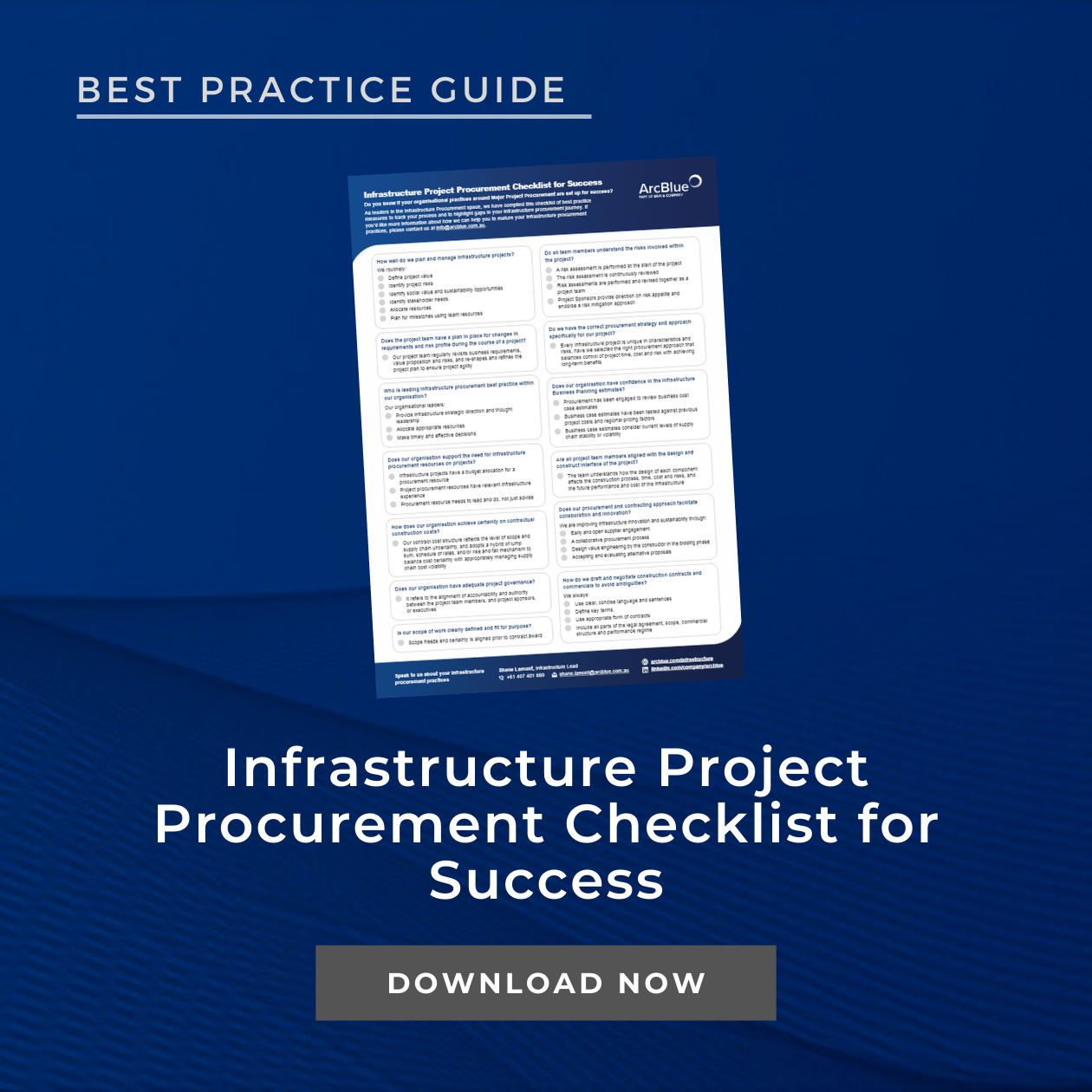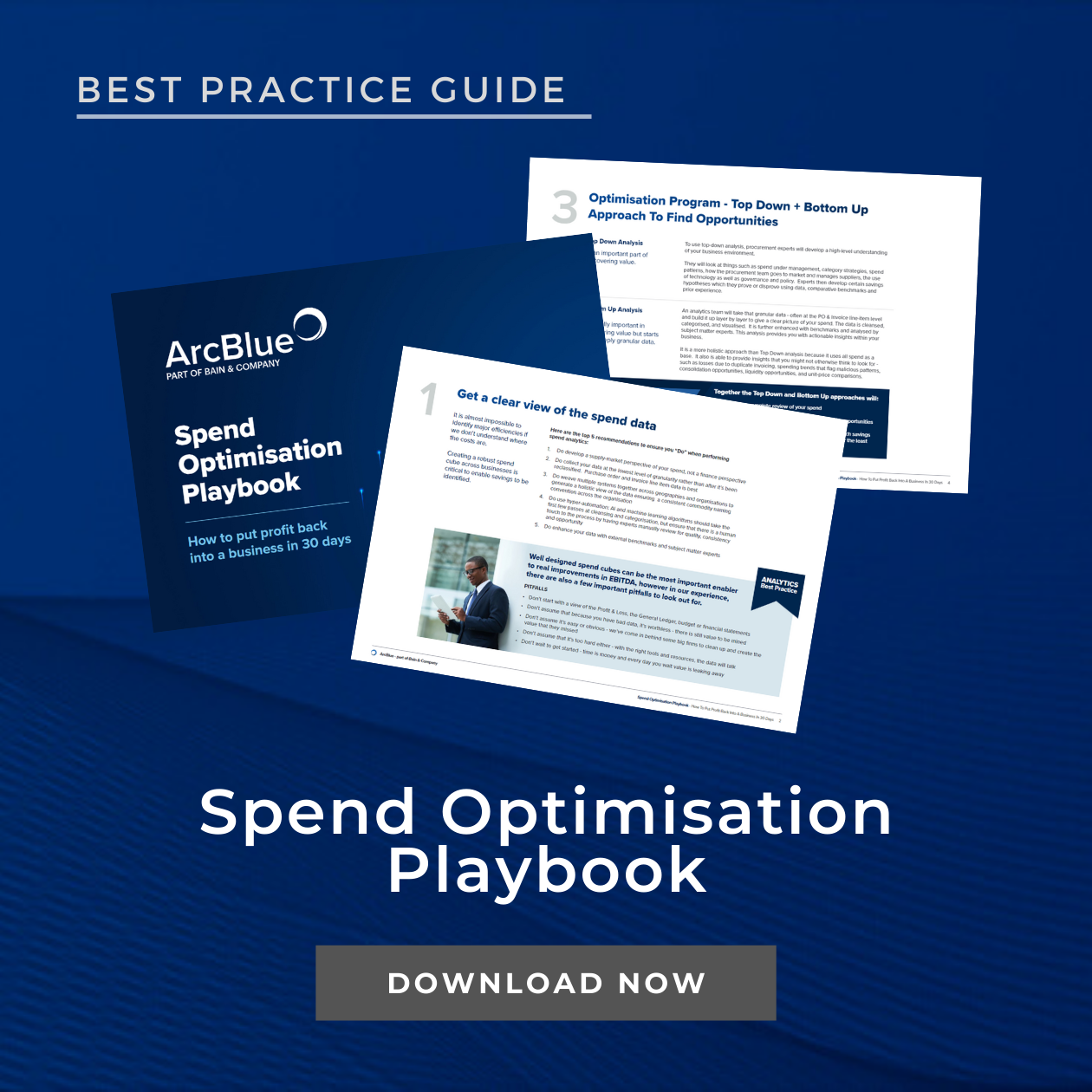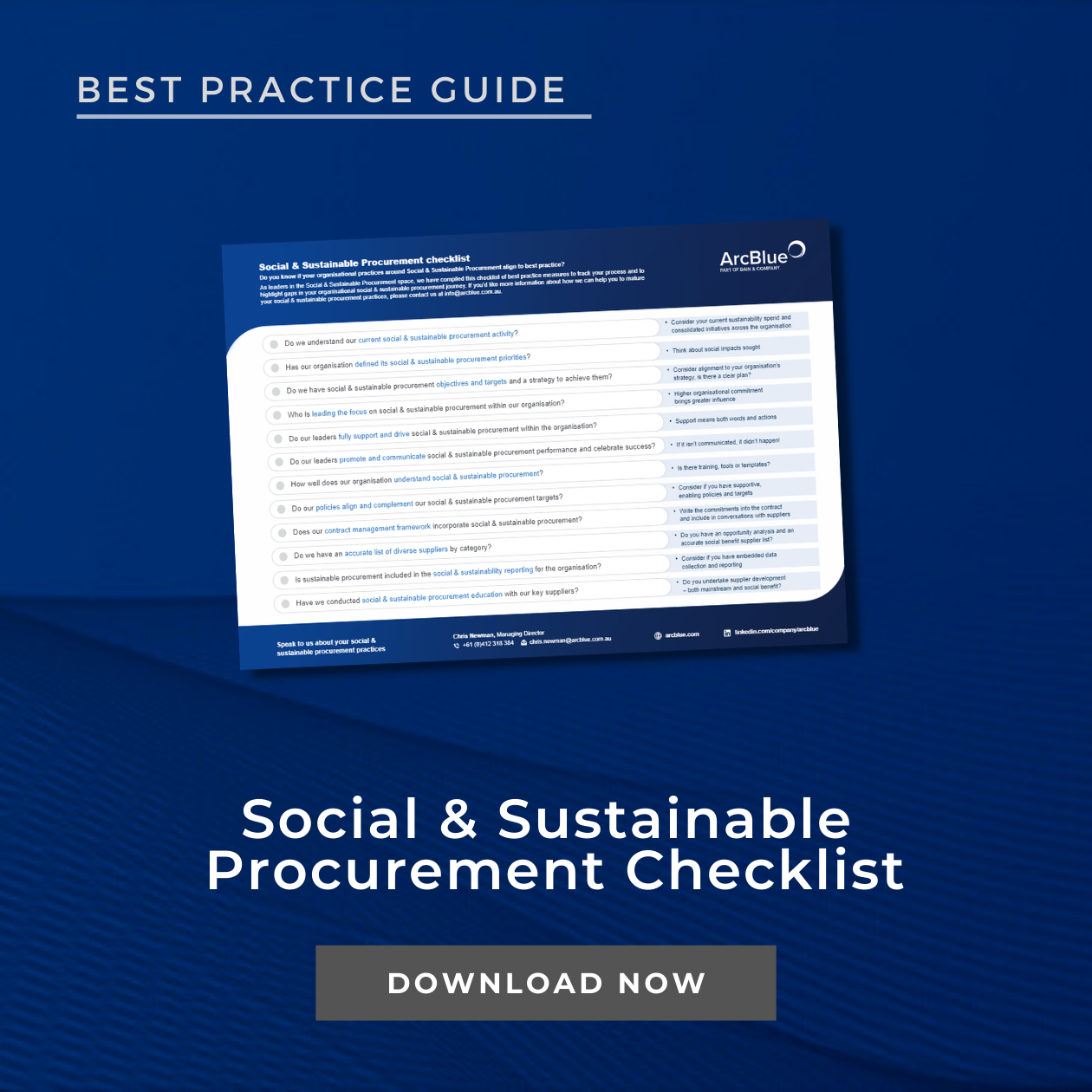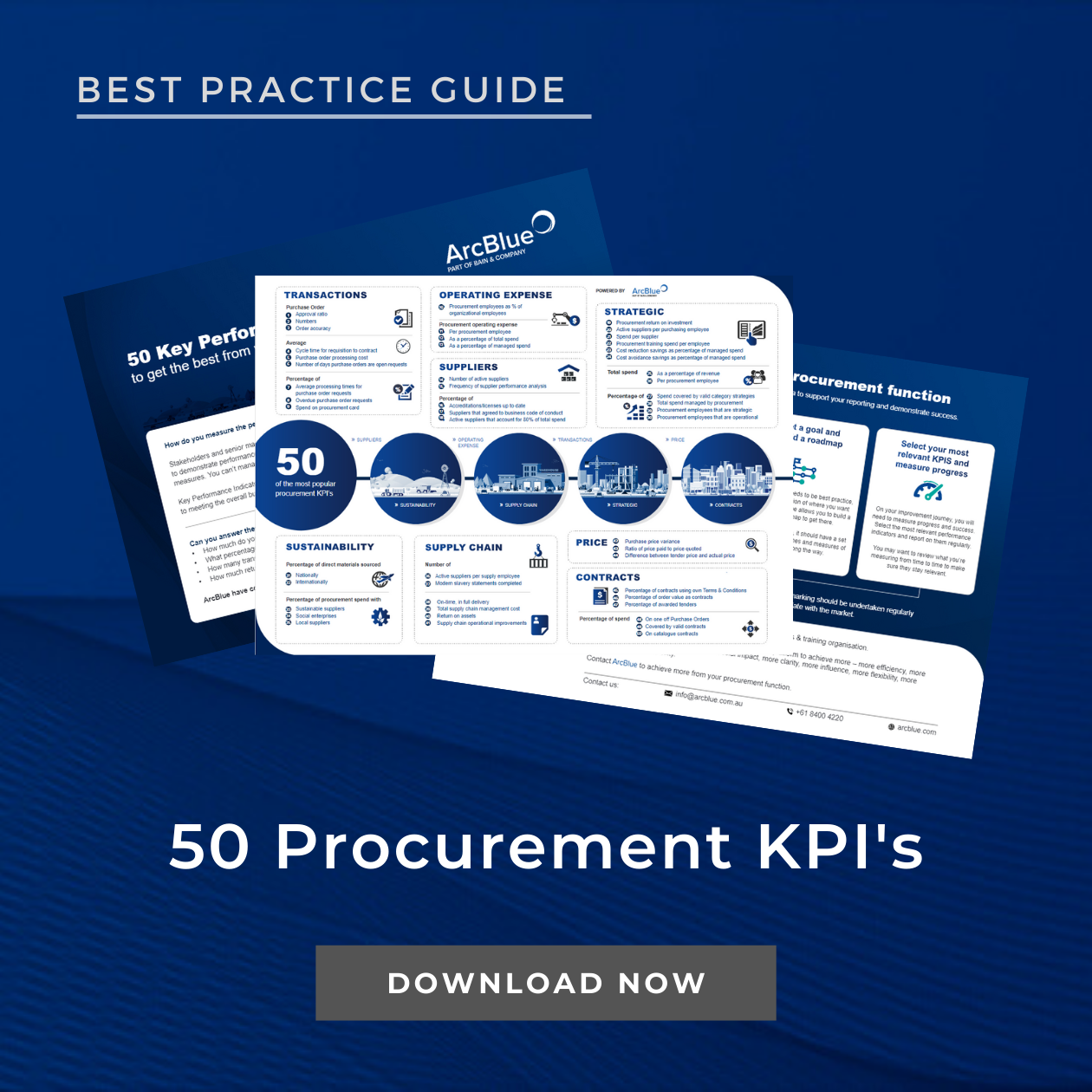- IN THE NEWS – ARTICLE
Procurement’s Vital Role in Shaping
the Energy Transition
August 2024
For the longest time in Australia, Energy has been a story of state or natural monopolies, regulated tariffs and minimal choice. The fundamental of the energy transition is now being turned on its head.
ArcBlue spoke with ecogeneration magazine about how procurement and supply chain is key to overcoming these challenges.
The opportunity to be a producer, or at least to exercise more choice in energy supply, is now open to almost anyone. Australia’s ambitions to achieve net-zero by 2050 will involve a massive, complex transformation of the energy landscape.
This brings new complexity and problems for procurement and supply chain teams to solve. This is not a change that the industry can passively observe, rather, this impacts any business that produces or uses energy and the procurement and supply chain teams responsible for energy spend.
An exploration of new energy supply chain issues
With opportunity also comes challenges, and new energy and infrastructure opportunities have their fair share of issues.
The relative immaturity of supply chains, along with complex technology procurement decisions is daunting. There are well publicised concerns about the geopolitics of semi-conductors and critical minerals supply chains. More immediately, there are other impactful technology decisions which are also supply chain decisions (every problem, at its core, is a supply chain problem).
Solar and wind are mature products. There are (not insignificant) logistics and sourcing challenges, however the technologies and markets are known quantities. Generation is only part of the answer – storage and transmission take on outsized importance in renewable energy.
Those energy storage decisions are far more complex. Grid-scale battery storage, for example, looks like a diverse and competitive market while it is actually very concentrated at the fundamental technology, the battery cell.
Lithium-ion battery cell supply is dependent (+60 per cent) on a handful of Chinese manufacturers. Chinese suppliers hold a monopoly in lithium iron phosphate battery supply, while Japanese and South Korean suppliers rely on strength in NCM (lithium, nickel, cobalt and manganese) batteries. There are known human-rights and environmental concerns in these supply chains. Many other key components are completely reliant on international supply, given the low manufacturing maturity in Australia, exposing Australian projects to international competition.
“Australia is not the only country in the world who are working hard to try to transition their economy and we don’t yet have the strength of local manufacturing. We’re competing with other buyers who are often doing bigger projects and are closer to the suppliers in Asia, Europe, and North America,” Former Managing Director of ArcBlue Chris Newman said.
We most often see this in exceptionally long lead times. High voltage (HV) substations have a two-to-three-year lead time considering engineering design plus manufacturing time. Project quantities of HV cables are typically six to nine months manufacturing lead time from order acceptance.
This can also be a learning experience in Australia’s small market size; there are a limited number of manufacturers who will build to Australian standards, and they can be reluctant to switch manufacturing over for (relatively) small quantities of cable.
“Even within Australia, the competition of energy projects with other infrastructure demands is a constraint. Our tight market, key skill shortages and growing labour costs see projects competing against each other for the same limited resources,” ArcBlue’s Director for Infrastructure and Renewables Daniel Renfrey said.
Renfrey added that Australia’s habit of treating projects as islands with limited coordination or alignment of resource needs at a national level does not help.
Once manufacturing hurdles are overcome, project logistics represent a serious challenge. Wind turbines, for example, are shipped on dedicated vessels that are obviously constrained to a small and in-demand cohort of shippers.
The nacelle, which houses the generating components of the turbine including the generator, gearbox, drivetrain and brake assembly, is a heavy, oversize load creating restrictions on land-side transport.
While community demand for renewable, clean energy may be well past the tipping point of consensus, the reality of renewable energy projects is creating new conflicts.
There are many examples of pushback against construction of solar farms, wind turbines and transmission lines. The social licence to build new energy infrastructure is a critical constraint on projects, and a key consideration for procurement.
The importance of procurement and supply chain
Fundamentally, the procurement function is the way a business connects with the other participants in the market necessary to achieve its goals.
The energy transition has the typical procurement and supply chain challenges in spades; emerging technologies, immature markets, make vs buy decisions and the need for market-building collaboration. All this in the context of broader post-pandemic supply chain disruption, with conflicts, loss of shipping routes, re-emergence of sovereign manufacturing imperatives protectionist trade policies.
“If ever there was a time for us in the profession to earn our pay checks, this is it. An optimised procurement strategy, highly capable procurement and supply chain team with sufficient capacity can be the critical success factor for a winning energy transformation project,” Emerson Boyle, ArcBlue’s Director for Energy and Natural Resources said.
The procurement and supply chain approach – what do we need to do differently?
Idealised procurement practice follows a formula; wait for the end user to develop a comprehensive, detailed scope of work, take this scope to a crowded market in a competitive process, then negotiate with the shortlist for lowest price. However, this doesn’t work in new energy due to immature markets and technology flux requiring an innovative, agile approach in procurement and challenging legacy practices. So what do we need to do differently?
Develop the supply chain: there is a need to develop the supply chain to a state of maturity. This creates opportunities and also flips the supply chain to consider ‘what can we positively develop or build competitive advantage from?’
“There is an important role for governments here, however as buyers we have the opportunity to build resilient supply chains and develop social licence through investment in local capacity and capability building,” Justin Sara, ArcBlue Director for South Australia said.
Market intelligence isn’t just for tactical sourcing decisions – it is enormously valuable for guiding business strategy. Gaining line of sight of the national project pipeline to assist in forecasting where your demand will be coincident with other like projects is important.
Look beyond your project niche; for example, transmission projects require transformers and so do hydrogen projects, creating competing demand.
Invest in building social licence: not only because expectations of government, regulators and community have shifted but because this is a critical enabler for projects as a whole. Expectations cover the building of ethical supply chains (navigating the minefield of environmental and human rights issues) through to local employment and social benefits. Procurement is a mechanism to build social licence, when mindful of engagement, planning, and adapting to local nuance to be effective.
“We have moved past new energy projects gaining community support by buying the local footy team jumpers. Local people know there is significant investment coming to the region and when projects don’t realise real benefit to them, then there is disappointment, and the negative reputational risk for the project is high,” ArcBlue’s Social and Sustainable Procurement Lead Petra McLoughlin said.
Collaboration and engagement: To achieve the above, it requires enhanced collaboration and engagement across the supply chain is required in order to achieve social licence and a more mature supply chain.
As buyers we need to be more transparent with potential suppliers to engage in an iterative, agile procurement process. Across the supply chain, we can help in standardising expectations of suppliers.
Contracting models: these often need to support investment. Typically, we write procurement contracts as a one-way option. Suppliers making significant capital investments will often need to show stronger, binding obligations as security for finance.
There is also a need to consider reservation agreements (and related mechanisms) to ensure supply even with established suppliers.
Procurement and supply chain needs to keep up with the pace of change
Renewables are now delivering one third of Australia’s energy mix (energy.gov.au), meaning that the energy transition is already underway at pace.
With the 2024-25 Federal Budget committing over $22 billion to accelerating renewable energy on top of a confluence of Commonwealth, state and local incentives, macro-economic factors and community expectations are also contributing to accelerating the pace of the transition.
“This is a future which procurement and supply chain must embrace in order to achieve the nation’s energy transition goals,” Boyle said.
Most importantly, Boyle said procurement and supply chain teams need to invest in their own skills and capabilities to meet these challenges.
So, when do we need to be ready for this? The team at ArcBlue is confident the answer, clearly, is immediately, if not sooner.

For more information, visit arcblue.com
INSIGHTS
RESOURCES & DOWNLOADS





